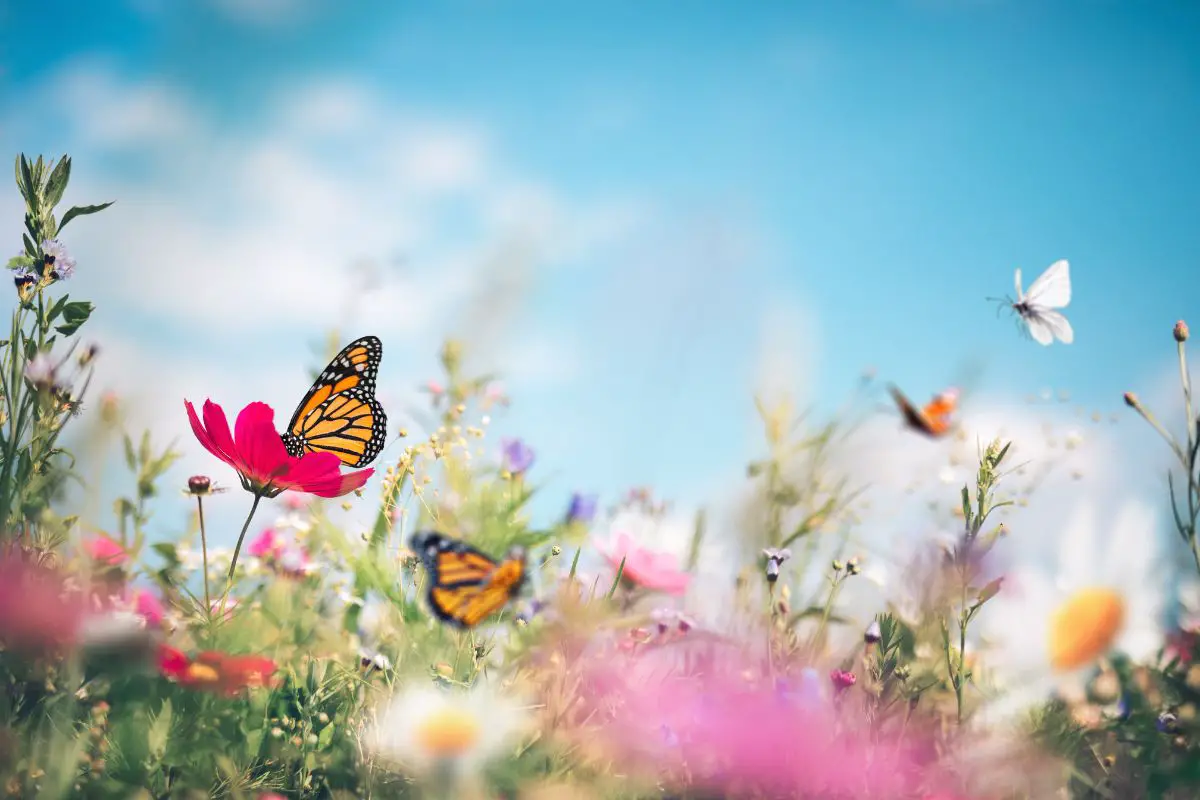
There are over 175,000 species of butterflies in the world. They are insects of the Lepidoptera order that begin their lives as caterpillars. Like all insects, they have three main body parts; the head, thorax, and abdomen.
The head features a pair of long antennae with ball-shaped tips. They also have two large eyes and between their eyes is the mouth. Butterflies also have a tongue called a proboscis.
It’s tubular and can roll-up. The thorax or middle part of the butterfly holds the muscles that move the butterfly’s six legs and wings. The heart and digestive system are also in the thorax.
Butterflies have an exoskeleton, which is hard, shell-like skin. Butterflies come in many colors. Their wings actually give them their colors.
They have thin, stiff wings, with two in the front and two in the back. The wings have a dusty texture consisting of scales. The scales give the butterflies their colors.
When it comes to eating, butterflies feed on the nectar in flowers. They taste food through the tiny hairs on their front feet, but they eat the nectar by rolling up their proboscis. They insert it into the flower and use it like a straw to suck the nectar.
Some butterflies also eat tree sap, fruit, and even dead animals. They drink water the same way. Most adult butterflies live for one to two weeks and during that time, they pollinate flowers, crops, and native plants.
Many people plant butterfly gardens to attract beautiful and colorful butterflies. Although butterflies don’t have the same reputation as other creepy insects, there are other insects that are similar to butterflies. Take a look at the following insects with many of the same traits as butterflies.
1. Snowberry Clearwing moths could fool birdwatchers.
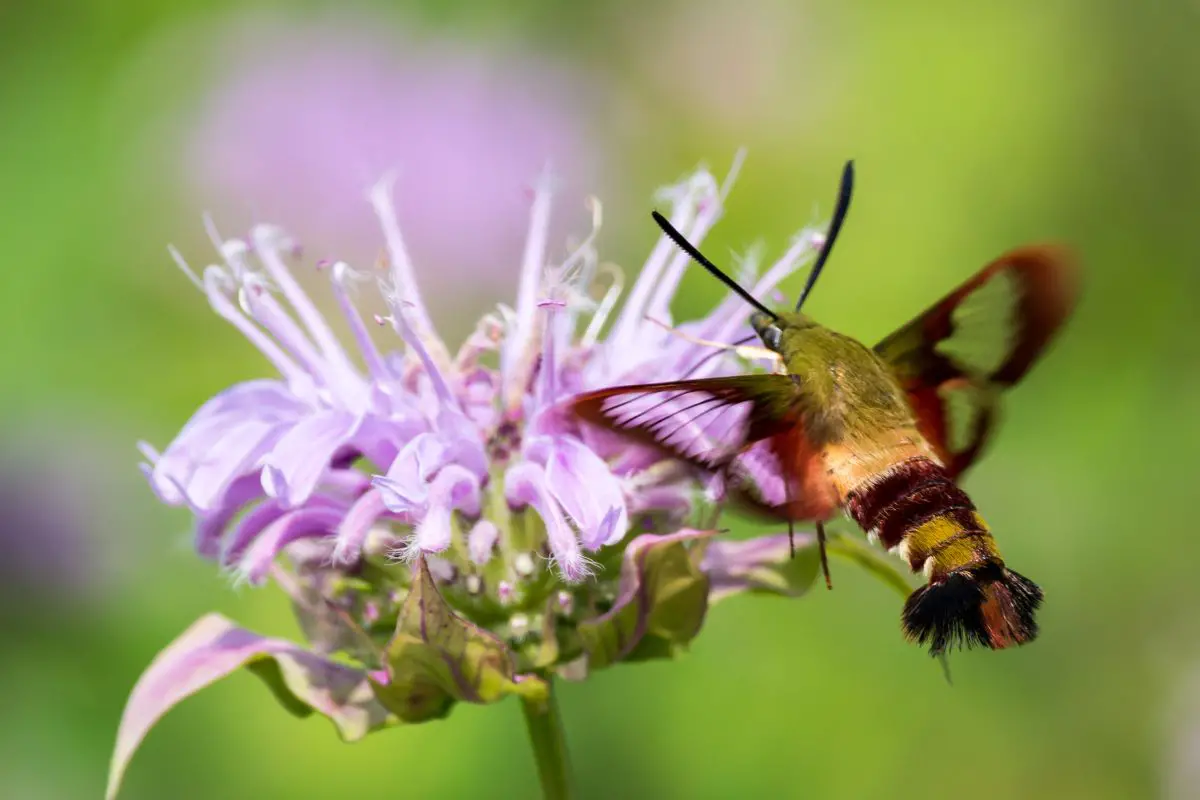
Although moths aren’t as attractive as butterflies, there are over 11,000 species and many of them are incredible. For example, the Snowberry Clearwing moth actually looks like a hummingbird.
Differences
- Usually active at night
- Belongs to the Sphingidae family
- Looks like a hummingbird
- Fuzzy body similar to a bumblebee
Similarities
- Begin life as caterpillars
- Drink nectar from flowers, especially honeysuckle, and dogbane.
- Emerge as adults from cocoons
- Live in the U.S. from Maine to Florida
- Three body segments
- Six legs
2. Luna moths don’t have to worry about overeating.
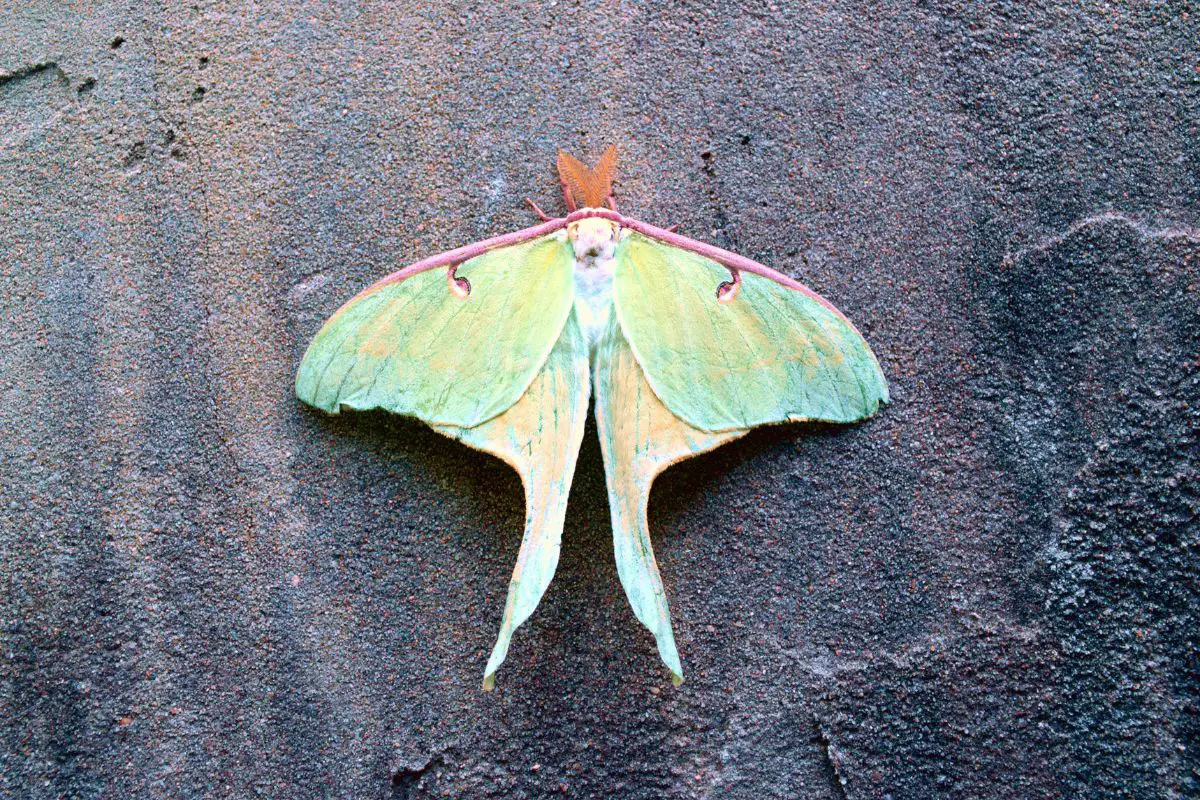
Luna moths are bright green and have feathery antennae. The one amazing thing about these moths is they don’t have a mouth. They never eat as adults and only live for one week.
They live in the deciduous forests of North America.
Differences
- No mouth, so they don’t eat
- Feather-like antennae without bulbs at the tip
- Elongated tail wings
- Attracted to lights
Similarities
- Eat when in the caterpillar stage
- Emerge from papery cocoons
- Three main body segments
- Six legs
3. Sawfly larvae look like butterfly caterpillars, but you don’t want them in your butterfly garden.
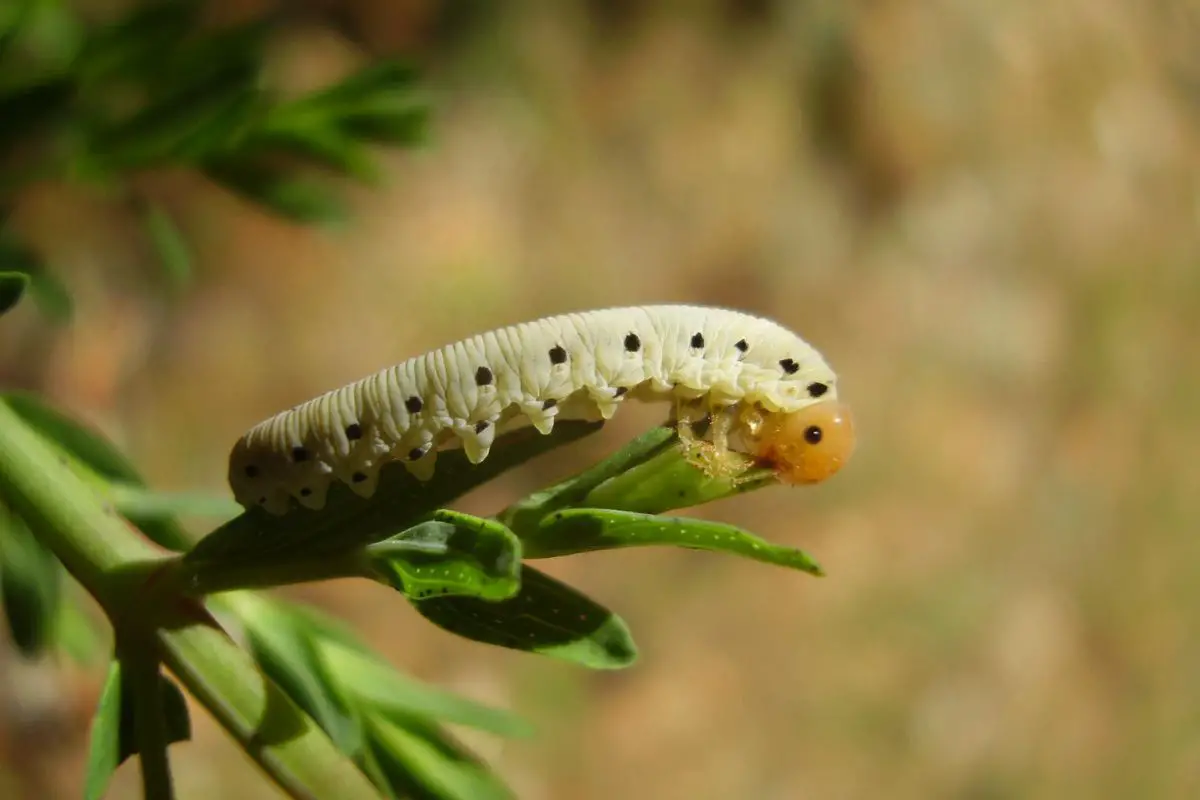
If you see sawfly larvae, you might think it’s going to transform into a beautiful butterfly. They look very similar. But, as an adult, the sawfly doesn’t resemble a butterfly at all.
Sawflies feed on trees and shrubs, so you don’t want them anywhere near your butterfly garden. There are over 7,000 species of sawflies. Adults live for 7 to 9 days.
Differences
- Sawfly caterpillars have more legs
- Belong to the Hymenoptera family
- Related to bees and wasps
- Damage leaves and evergreens
- Feed on foliage
- Weak fliers
Similarities
- Same growth stages of egg, larva, pupa, and adult
- Three body segments
- The caterpillar stage appears to be a butterfly caterpillar
- Segmented antennae
4. Uropyia meticulodina, it’s not just a brown, curled-up leaf. Watch your step.
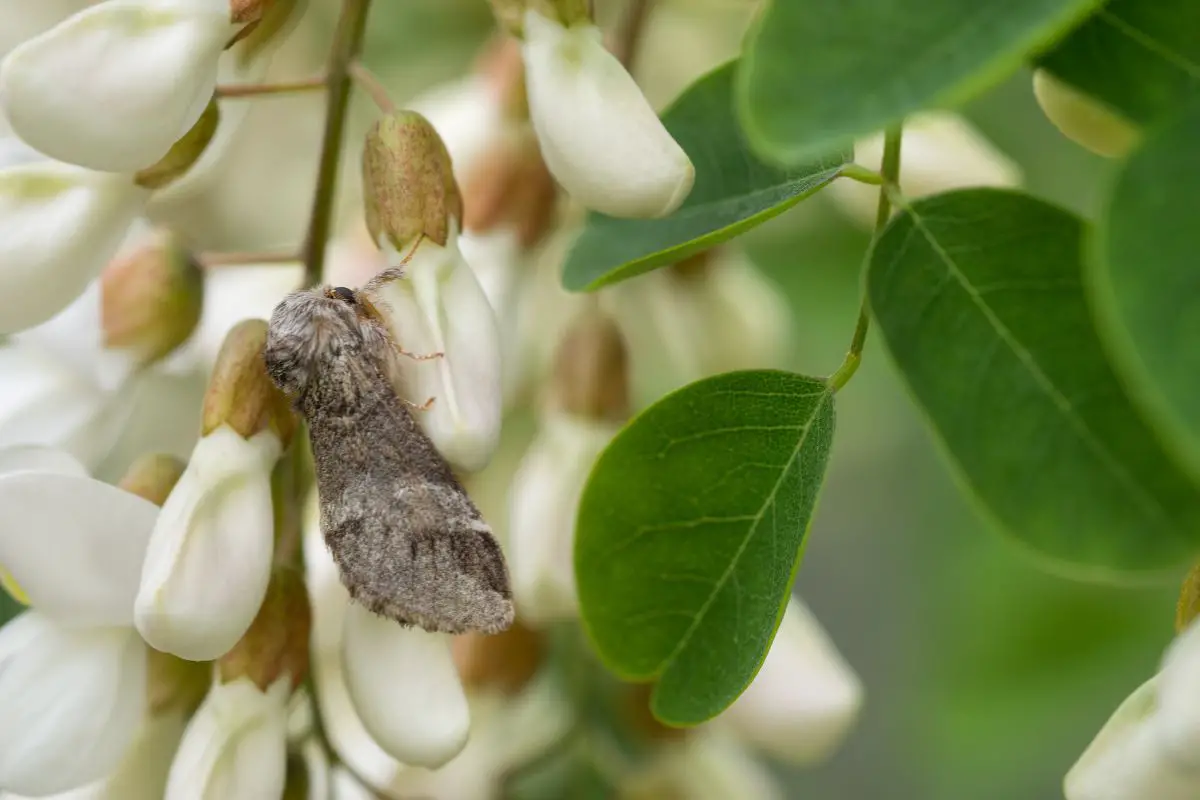
The Uropyia meticulodina is a moth that is camouflaged so well that you can’t see it as it sits in a pile of dead leaves. This moth can curl up its wings to look crispy and brown. This makes it look just like a dead leaf.
It belongs to the Notodontidae family and is native to Asia, but there have been sightings in the U.S.
Differences
- Mimics a dead leaf, so it’s not very colorful
- Lives on the forest floor
- Wide fuzzy head
Similarities
- Emerges from a cocoon
- It has a caterpillar stage with a green and brown pattern.
- Three body segments
- Six legs
5. Dragonflies are delicate but have survived for 300 million years.
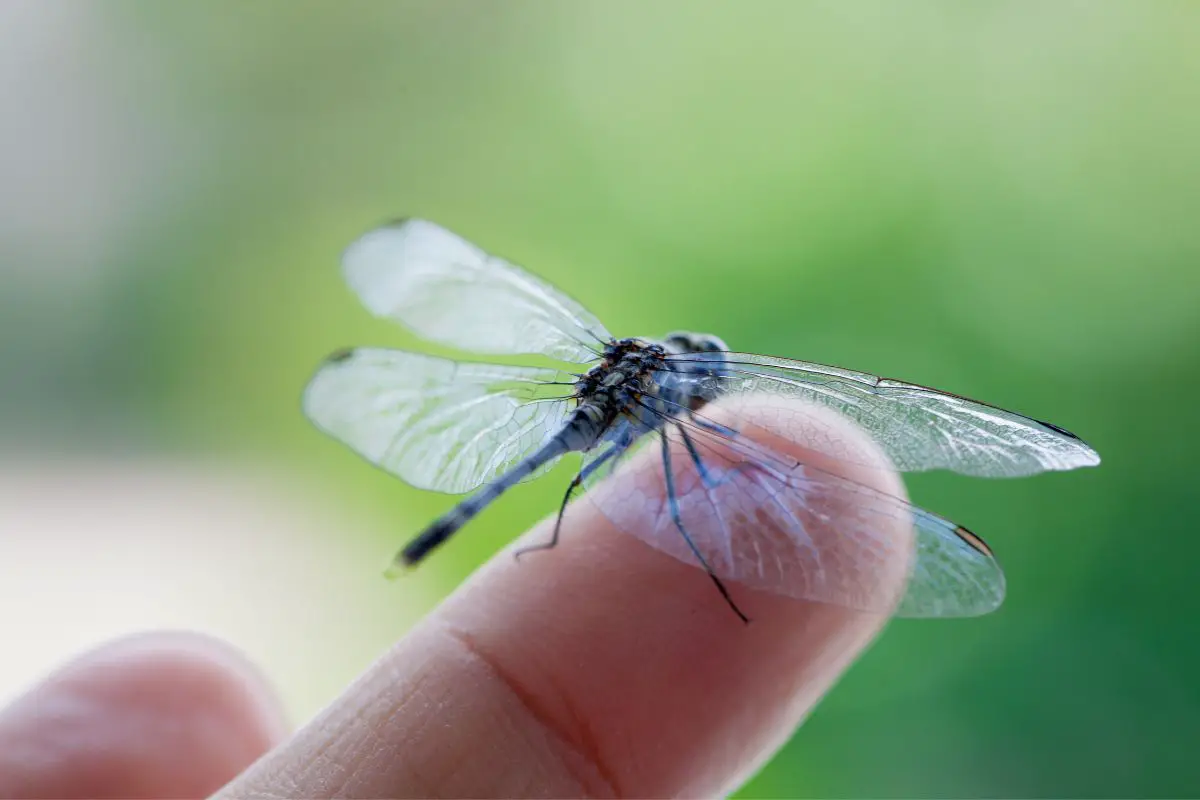
Dragonflies are insects from the Anisoptera family. They’re delicate and graceful insects, just like butterflies, and they’re summer bugs. They live all over the world except in frigid Antarctica.
There are over 7,000 dragonfly species. After hatching from eggs that females deposit on top of the water, they live for about one month. During that time, they perch on flowers and zip around backward and forward using their four long wings.
Differences
- Don’t emerge from cocoons
- Eggs hatch while floating on water
- Doesn’t go through a caterpillar stage
Similarities
- Great pollinators
- Many intense colors
- Six legs
- Three body segments
- Two large eyes and good vision
6. Leafhoppers sing songs of summer and pollinate plants.
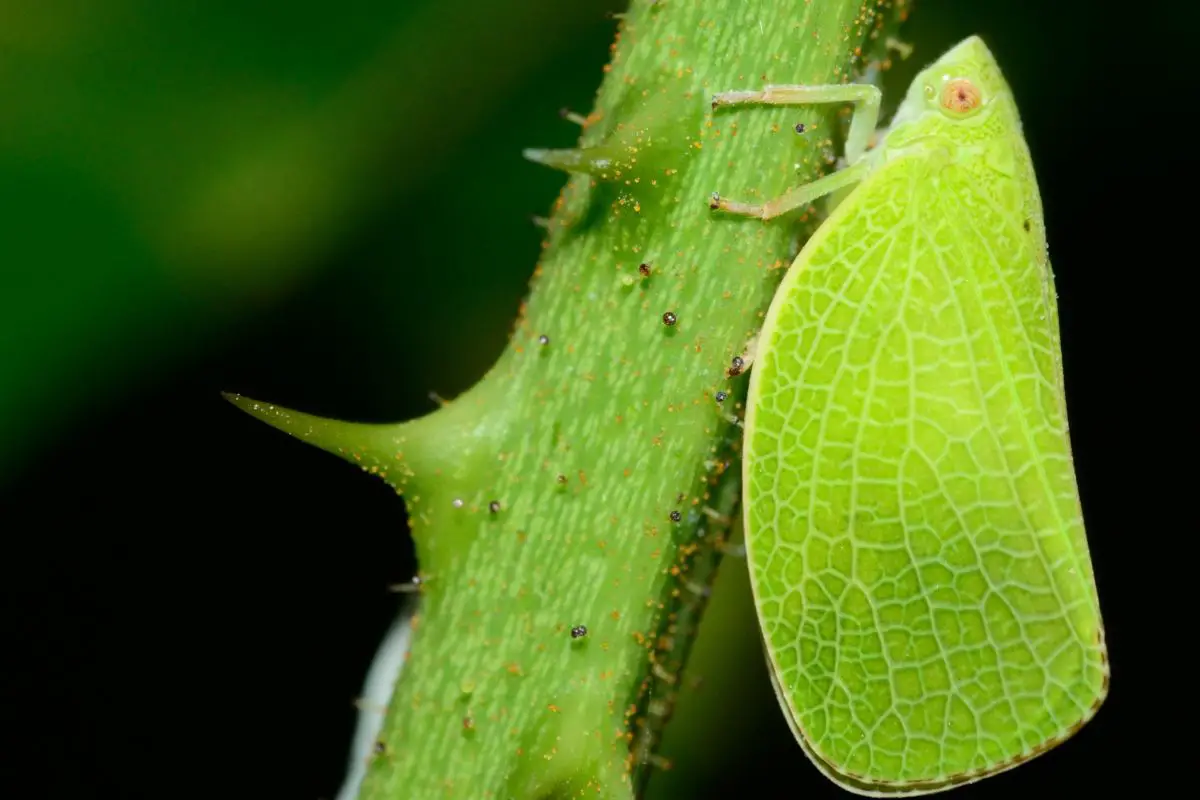
There are over 3,000 types of leafhoppers and similar bugs. They feature many color variations, just like butterflies. The candy-striped leafhopper is one of the most colorful with vivid red, sky blue, and yellow markings.
Leafhoppers belong to the Cicadellidae family, along with cicadas and spittlebugs. They make shrill, loud sounds during the summer. Adult leafhoppers suck sap from plants and pollinate them as they fly from plant to plant.
They’re also good jumpers, which you can tell from the name.
Differences
- Doesn’t have a caterpillar stage
- Born as juvenile leafhoppers without a cocoon
- Long, powerful hind legs
Similarities
- Possess vivid colors with striking patterns
- Effective pollinators
- Antennae
- Compound eyes
7. Skippers could be moths or could be butterflies. The debate rages on.
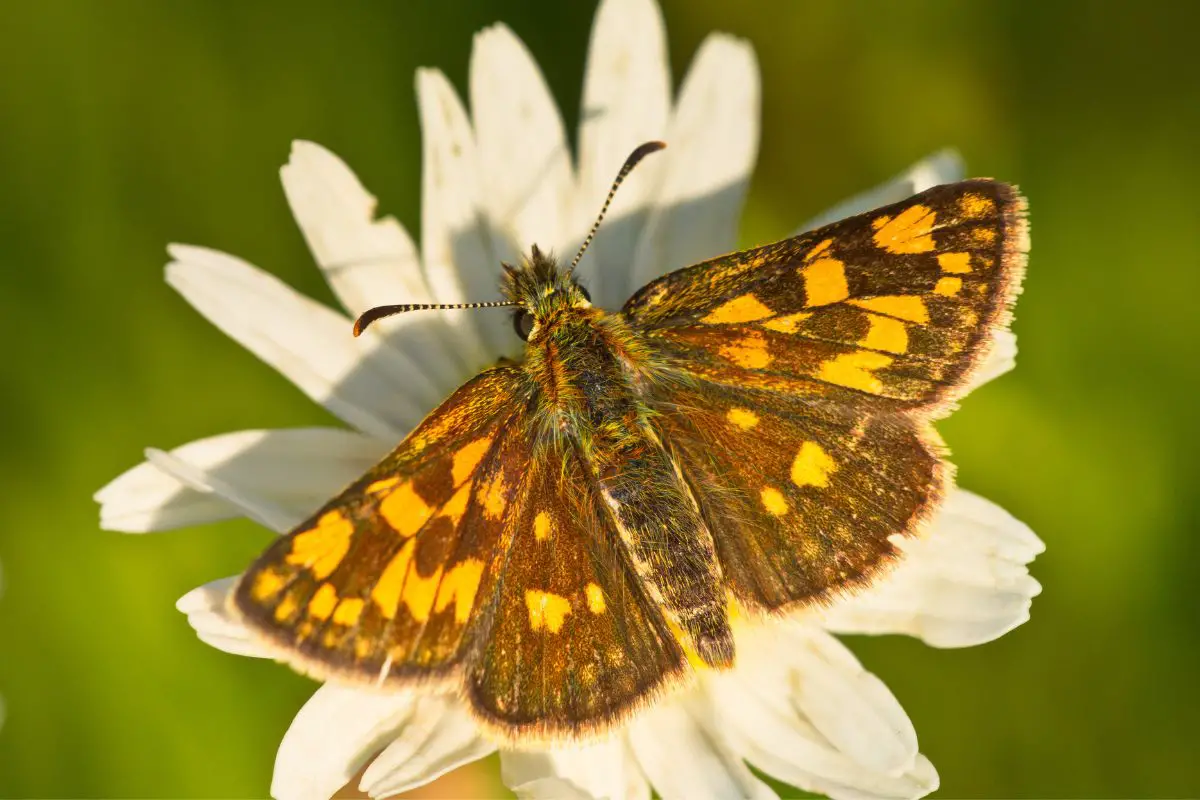
The 275 species of Skippers are from the family Hesperiidae living in North America. When you look at them, most likely, you won’t be able to decide if they’re butterflies or moths. Like butterflies, they love flowers and have ball-tipped antennae.
But, unlike butterflies, they have short, stubby bodies. Also, many of them feature dull brown and gray wings that they often hold flat to the side. The larvae or caterpillar stage features a large head and large, thin body without much hair.
Previously, skippers were labeled as moths, but recently they’re considered closer to butterflies.
Differences
- Thick and short bodies
- Drab brown and gray wings
- Hairless larvae
- Drink water from puddles
Similarities
- Drink nectar with long proboscises
- Emerge from cocoons
- Have a caterpillar stage
- Good pollinators
- Ball-shaped antenna tips
- Large eyes
8. Wasps are scary, but the world wouldn’t be the same without them.
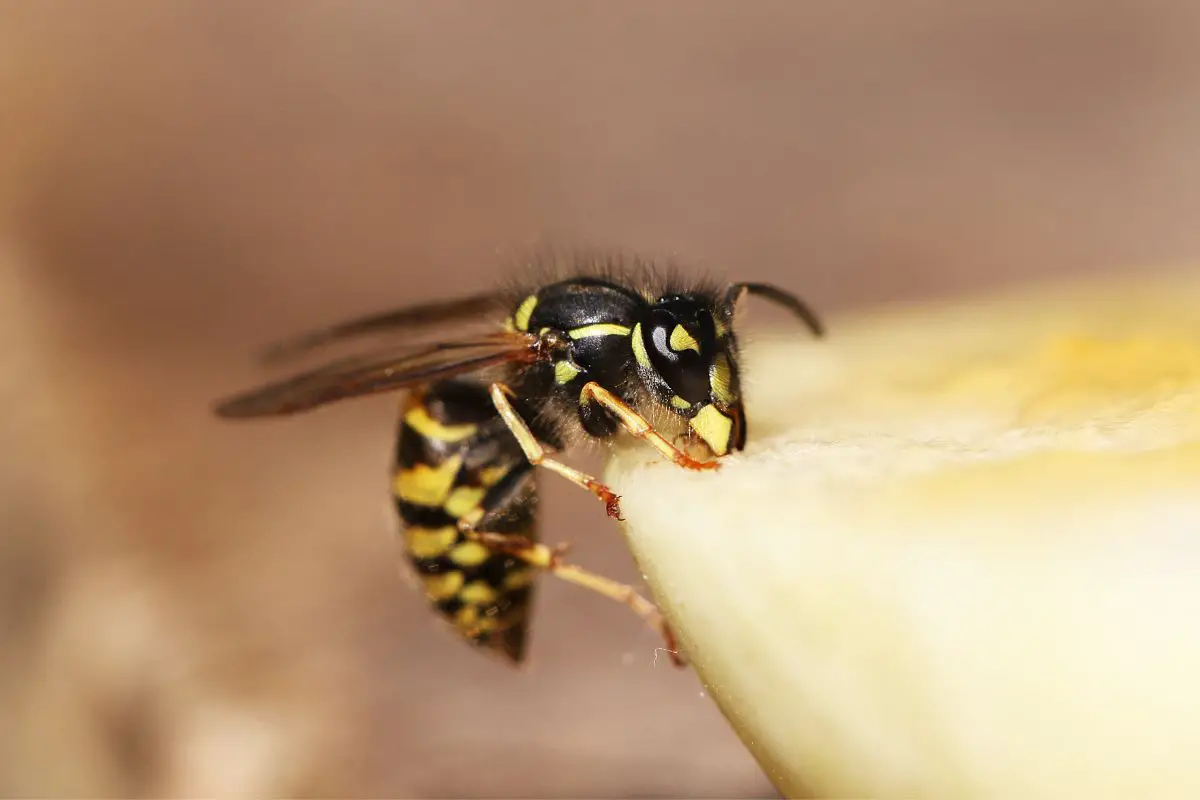
Wasps strike fear into even the toughest people, but these hunting insects do their share in keeping the ecosystem in order. Like butterflies, they hang out on flowers and transfer pollen to other flowers. They can also drink nectar with their proboscis, but they also eat other insects and spiders.
Wasps belong to the Vespinae family and most of them live solitary lives. There are over 30,000 species of these angrily buzzing insects. They have a hard exoskeleton similar to butterflies.
They also have two pairs of wings and narrow waists.
Differences
- Have stingers
- Eats other insects and spiders
- Use mouth parts for licking and chewing
Similarities
- Pollinators
- Have a proboscis for sucking nectar
- Two sets of wings
- Six legs
- Body with three segments
- Hard exoskeleton
9. Lady beetles are cute and colorful predators.
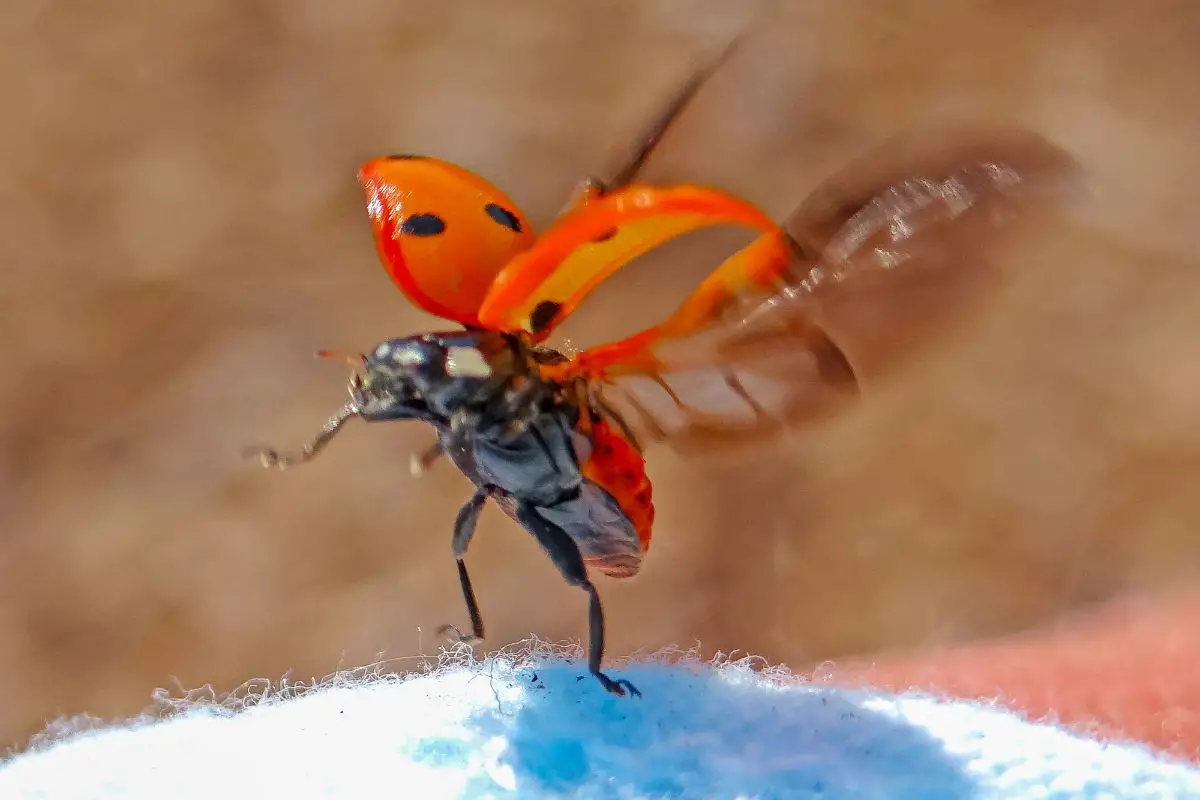
There are over 450 species of Lady beetles in North America. They’re also known as ladybugs and have lives similar to butterflies. They’re very colorful, but their bodies are round and domed.
They are usually red or orange with black spots, but they can also be black, pink, or yellow. The larvae look similar to a caterpillar, but they don’t have a visible head. During this stage, the larvae also have bumps.
The larvae pupate on leaves and emerge as adult lady beetles. They eat other insects, such as aphids, rather than drinking nectar.
Differences
- Benefit farmers by eating aphids, mites, and other insects off plants
- Don’t drink nectar
- Small domed body
- Larvae look more like alligators than caterpillars.
Similarities
- Similar life stages
- Good pollinator
- Bright, vivid colors
10. Hoverflies would rather visit flowers than your picnic basket.
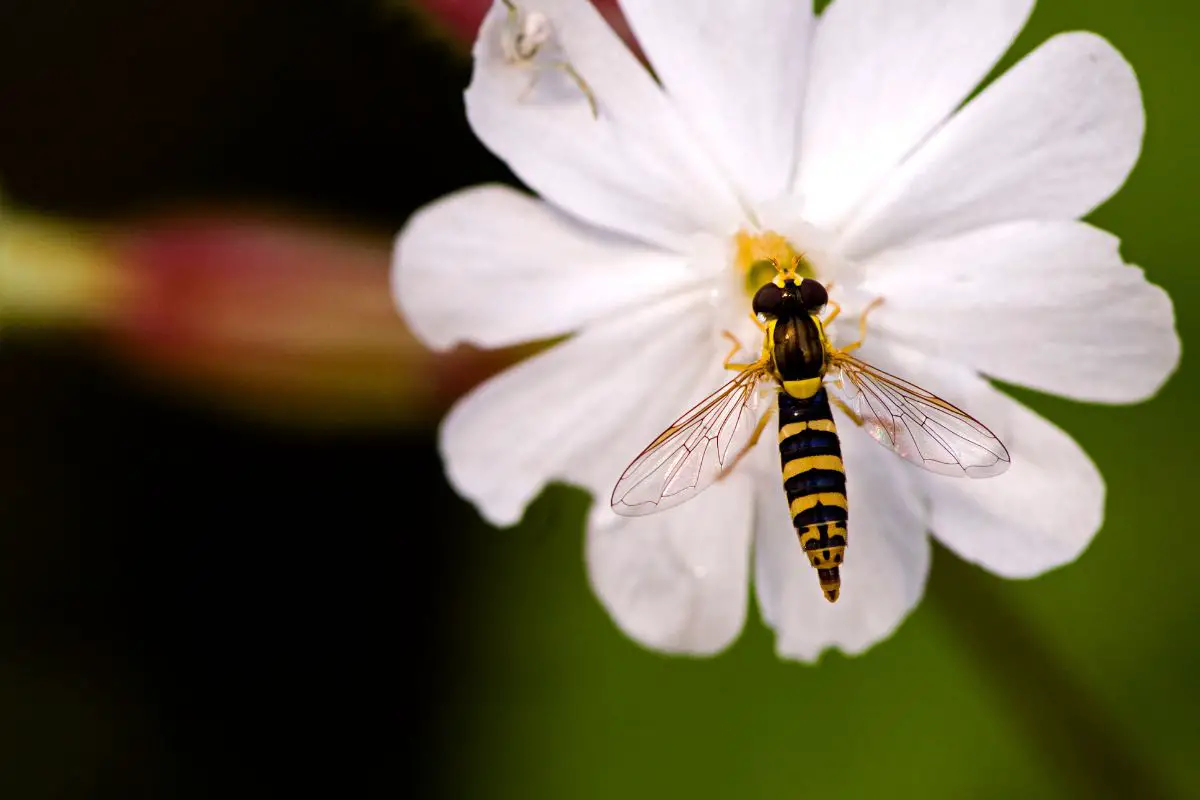
The 6,000 species of hoverflies love visiting flowers. They are essential pollinators, especially in cold arctic and alpine habitats. The best pollinating hoverflies are from the Syrphidae family.
They’re so good at pollinating plants, they’re often called flower flies. Some hoverflies have a similar proboscis as butterflies, using it to suck nectar from tubular flowers. Their favorite places to gather nectar are fruit orchards, such as cherries, apples, pears, peaches, and berry bushes.
Differences
- Don’t emerge from cocoons
- Larvae are small brown, legless maggots, rather than caterpillars.
- Don’t have colorful bodies or wings
- Short, straight antennae
- Soft body, rather than an exoskeleton
Similarities
- Gather nectar and pollen
- Pollinate plants and trees
- Three body segments
- Six legs
- Large eyes
11. Long-horned beetles bring you sweet magnolias every year.
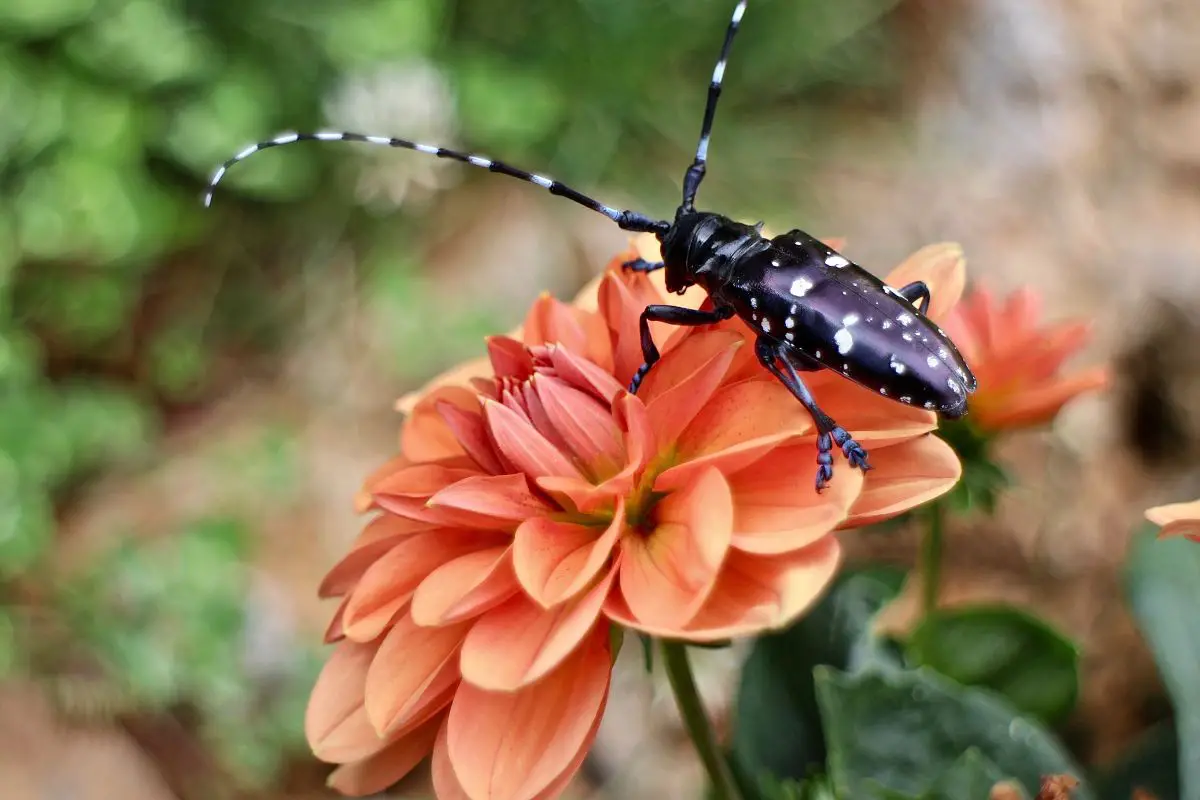
Long-horned beetles spend their time pollinating magnolia trees and feeding on the pollen. They go into the magnolia flower and deposit pollen that they gather on their legs from another magnolia blossom. Long-horned beetles have been pollinating magnolias for millions of years.
Long-horn beetles belong to the Chrysomelidae family. There are over 35,000 species of long-horned beetles that pollinate plants. This makes them the largest pollinating group of insects.
You might not see them as often as butterflies, but they’re the unsung heroes of pollination.
Differences
- Long and thin wings
- Antennae longer than the body
- Antennae located on the face
- Larvae feed on wood
Similarities
- Colorful patterns on the body
- Important pollinators
- Three body segments
12. Bumblebees visit the same outdoor cafe gardens as butterflies.
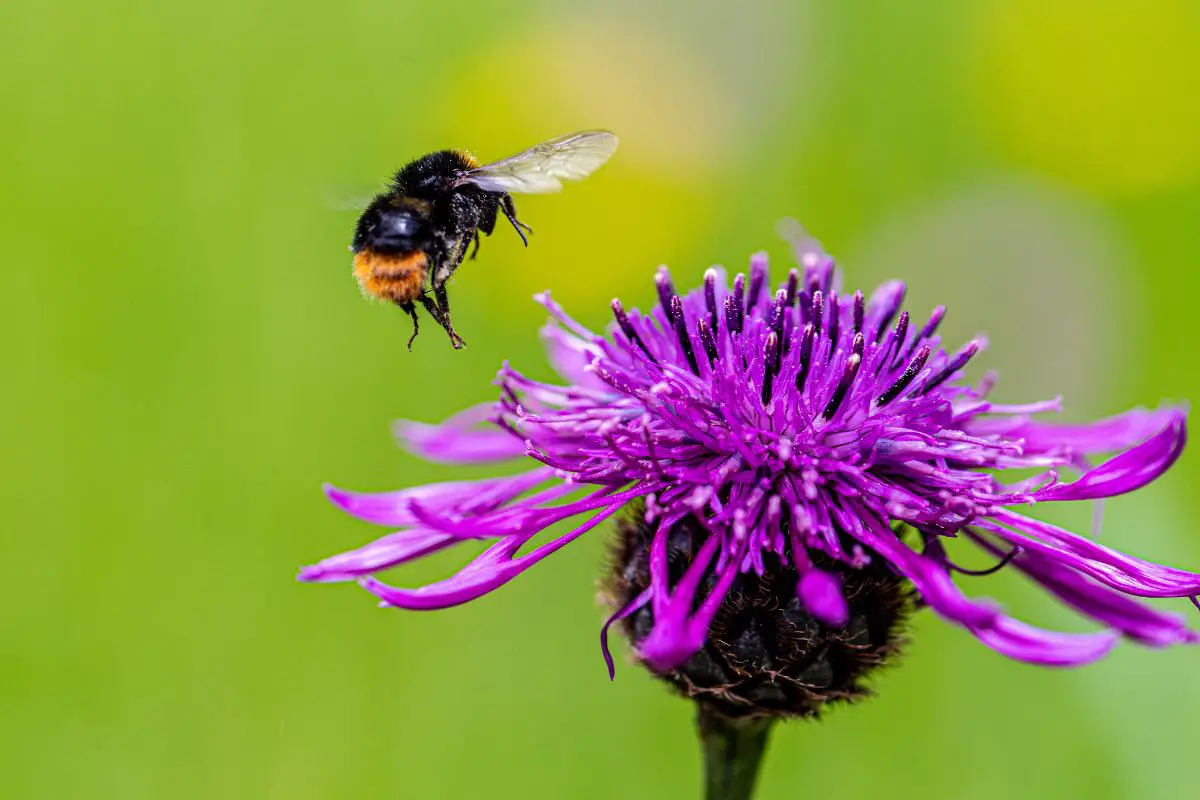
Bumblebees love nectar and pollen, often seen in butterfly gardens along with butterflies from North America. With over 255 species of bumblebees, they belong to the Apidae family. They’re the most important pollinators in the world.
They make a constant buzzing noise as their wings beat 130 times per minute. Most bumblebees have fuzzy, bright yellow bodies, but their weeks don’t have color like butterflies.
Differences
- Don’t form a pupa
- Wings aren’t colored
- Antennae are straight-tipped
- Large, plump, hairy body
Similarities
- Enjoy nectar and pollen
- Important pollinators
- Two large eyes and antennae
- Three body segments
- Six legs
13. Milkweed tussock looks more like a fuzzy little tiger than a moth caterpillar.
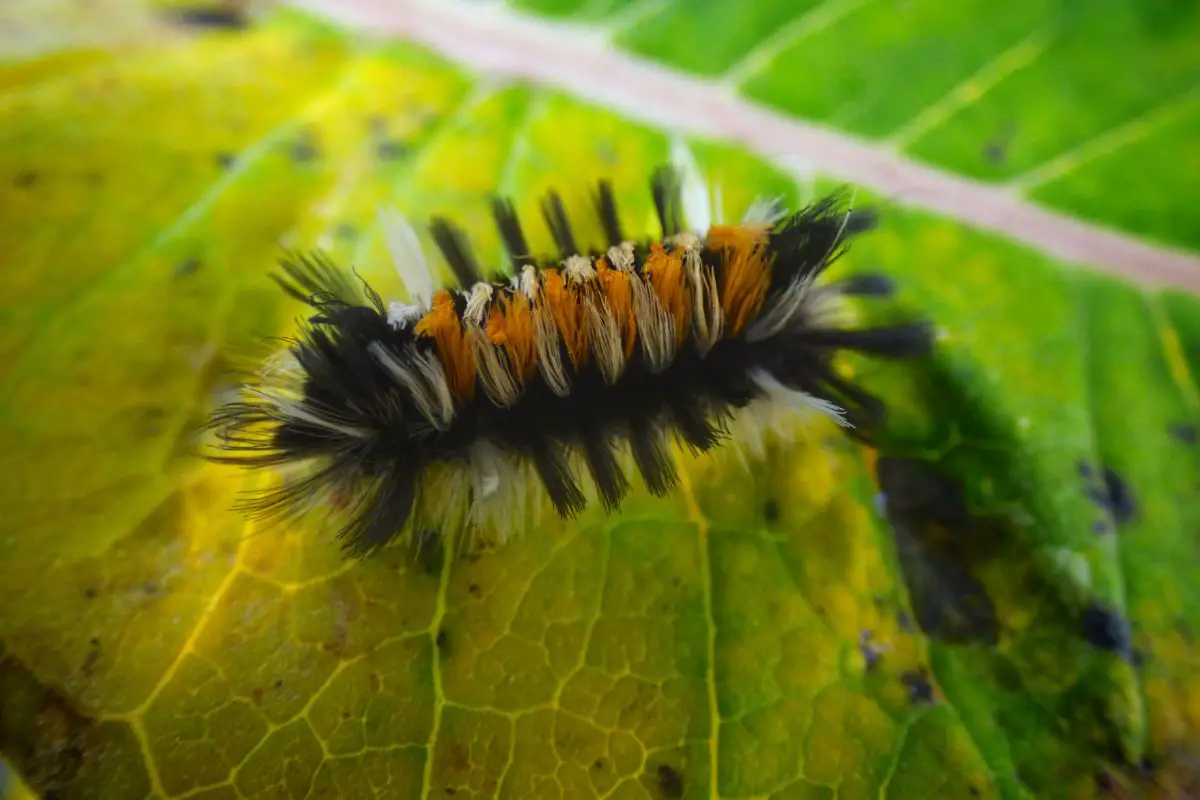
The milkweed tussock is a moth caterpillar that features fuzzy tufts that look like the fur of a tiny animal. Because of their very colorful appearance, with white, orange, and black tufts, they’re also known as tiger moths. Their favorite plant is milkweed, but they pollinate other plants, as well.
Monarch butterflies love milkweed too. The moth that emerges from the cocoon isn’t as colorful as the caterpillar. Their wings are a dull brown color, but their bodies are yellow with black spots.
Differences
- Spends most of its life on milkweed
- Dusty, dull brown wings
- Seen only in North America and Mexico
- Handling the caterpillar can cause a rash
Similarities
- Pollinators that help the ecosystem
- Emerge from cocoons
- Lives through the caterpillar stage
- Loves milkweed
- Three segment body
- Six legs
- Four wings
Milkweed tussocks belong to the Erebidae family and live across the U.S., Canada, and Mexico.
14. Honey bees keep the supermarket full with their superpower of pollinating.
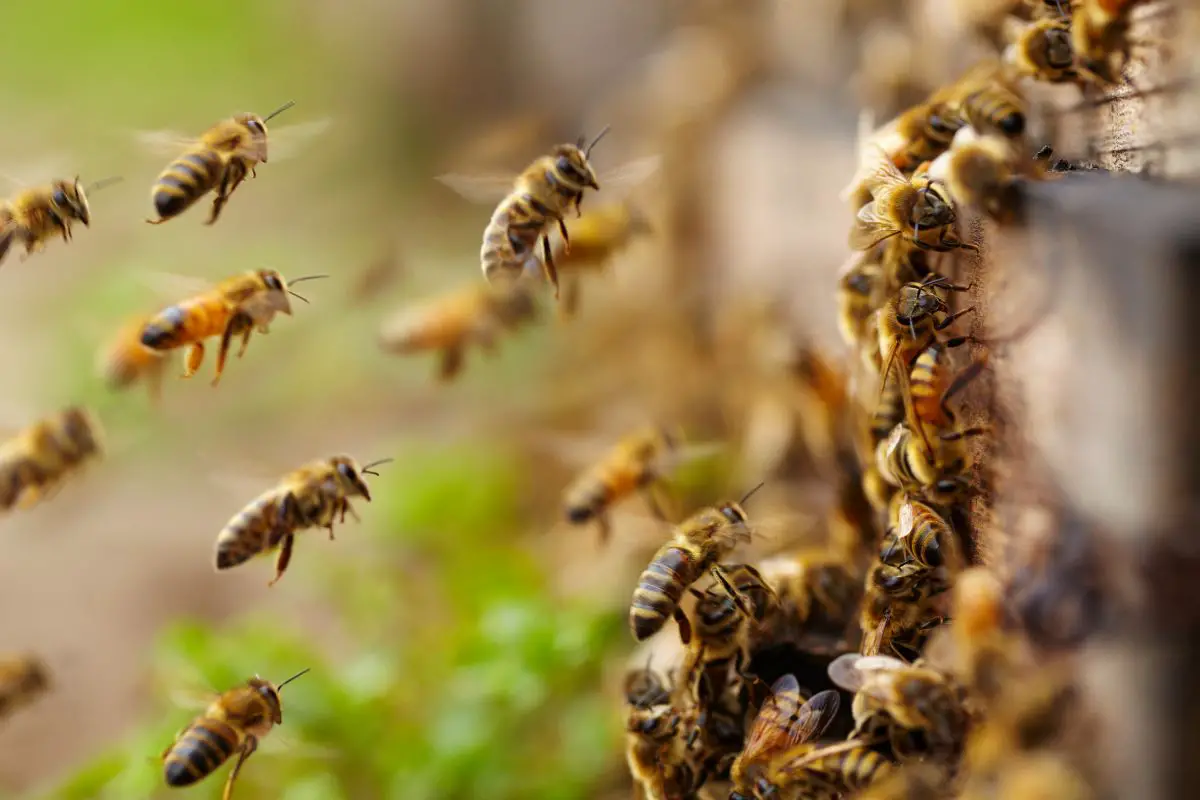
Honeybees are noted for their honey and their superior pollinating talents. You wouldn’t have much of the food you eat every day without honeybees. Like butterflies, they gather nectar and pollen from flowering plants and trees.
Honeybees are from the Apidae family and all of them live in hives or nests. Honey Bee eggs hatch into grubs in about three days, and adults emerge 16 to 24 days later. There are only eight honey bee species in the world.
Differences
- Don’t emerge from cocoons
- Have colorful bodies but dark wings
- Live in hives with other bees
- Short antennae
- Bring pollen back to the hive
Similarities
- Superior pollinators
- Gather nectar and pollen
- Three body segments
- Six legs
- Large eyes
15. Long-legged fly
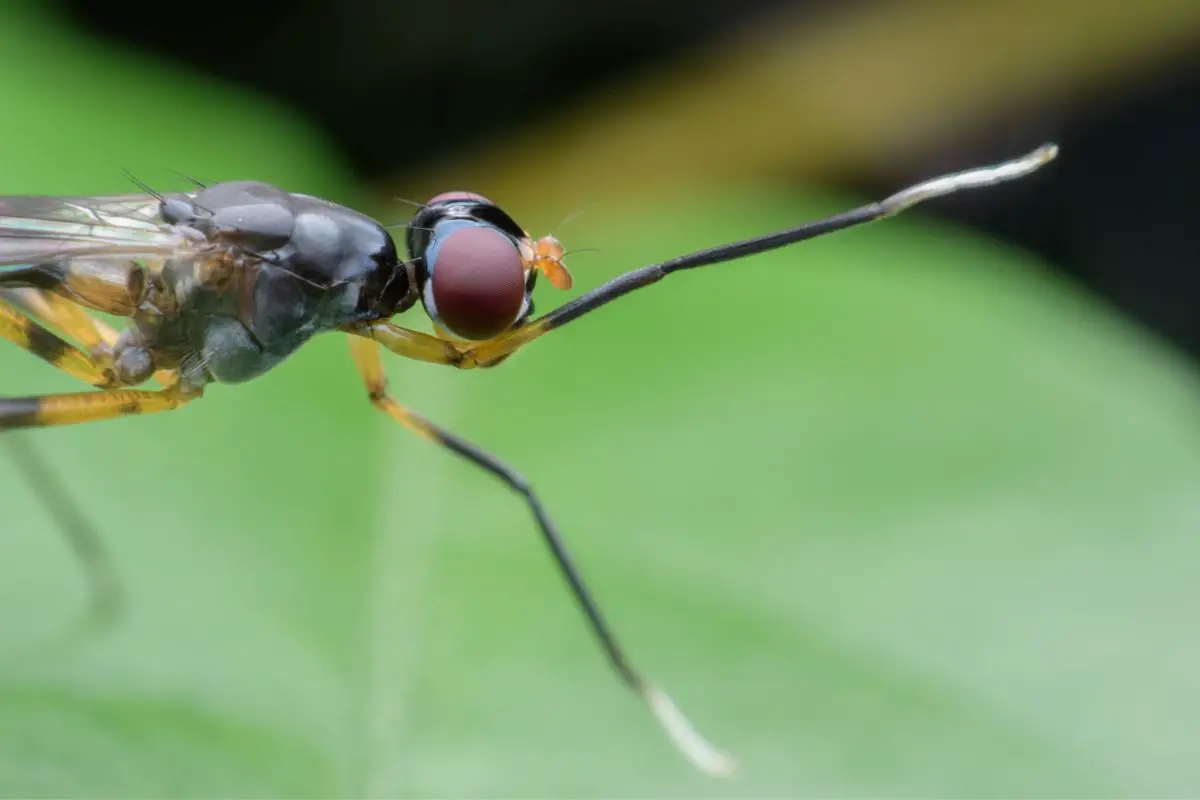
Long-legged flies belong to the large Diptera family. Their bodies are stunning metallic colors of blue, green, and rust. Even the wings are colorful but translucent.
They may be much smaller than butterflies, but they’re just as colorful. Long-legged flies emerge from cocoons that are made from dirt particles. They also have a short proboscis.
They are also useful pollinators.
Differences
- Small translucent wings
- The proboscis is for piercing rather than drinking
- Larvae eat trees and other wood
Similarities
- Good pollinators
- Colorful bodies and wings
- Large eyes
- Three body segments
- Two large eyes
- Adults emerge from cocoons
FAQs
What makes butterflies so colorful?
The tiny scales on butterfly wings are colored. They’re like fish scales. Each colored scale creates the colored patterns you see on butterfly wings.
They can look shiny when they reflect the sunlight.
What’s the difference between a butterfly and a moth?
Butterflies and moths are related but not the same. They’re from the same Lepidoptera family. This means they both have scales on their wings.
Moths aren’t usually colorful like butterflies and their antennae are straight at the top, while a butterfly has a ball on the tip.
Is a butterfly a bug?
Yes, a butterfly is a bug. They might be beautiful, but they’re insects and have the same body parts as all other insects.
Sources:



